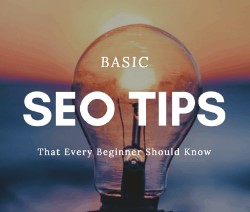Whether you’re running a blog, an e-commerce website, or a service-based business, the first step to online success often begins with being found. One of the most effective ways to ensure that your website is visible to search engines and, consequently, to potential customers is through keyword optimization.
Keyword optimization is the practice of choosing and strategically placing relevant keywords into your website content, blog posts, product descriptions, meta tags, and other areas to improve your site’s ranking on search engine results pages (SERPs). It is the foundation of Search Engine Optimization (SEO) and is essential to drive organic traffic to your site.
In this article, we will explore how keyword optimization works, why it is vital for online success, and how you can use it effectively to grow your online presence.
1. What is Keyword Optimization?
Keyword optimization is the process of selecting the right keywords to target in your content, ensuring that they are seamlessly incorporated into your website in ways that make sense both to your audience and to search engines. The goal is to make sure that your site appears in relevant searches when people are looking for the information, products, or services that you offer.
Search engines like Google, Bing, and Yahoo use algorithms to crawl and index websites, ranking them based on relevance, authority, and quality. Keywords are a significant part of these ranking factors. When search engines analyze your website, they look for keywords in your content to understand what your pages are about and how relevant they are to search queries.
The Two Main Types of Keywords:
Short-tail Keywords (Head Keywords): These are short, broad terms (e.g., “shoes,” “digital marketing,” “fitness”). They typically have high search volume but are also highly competitive.
Long-tail Keywords: These are longer, more specific phrases (e.g., “best running shoes for flat feet,” “how to do digital marketing for small businesses,” “fitness plans for beginners”). Long-tail keywords are less competitive, but they usually attract more qualified and targeted traffic.
Both types are important, and an effective keyword strategy will use a combination of both.
2. Why Keyword Optimization is Crucial for Online Success
a. Increased Visibility in Search Engine Results
The primary reason for optimizing your content with the right keywords is to improve visibility. Without proper optimization, your website will be buried under millions of other web pages on the internet. When your target audience searches for a product or service related to your niche, you want to ensure that your website appears on the first page of the search results.
b. Attracting the Right Audience
Keyword optimization helps you target users who are actively searching for your products, services, or content. Instead of relying on random traffic, you attract people who are genuinely interested in what you’re offering. For example, someone searching for “best coffee machine under $100” is more likely to purchase from a website that targets this specific need, rather than a general coffee machine retailer.
c. Enhancing User Experience
When you use relevant keywords in your content, it not only helps search engines understand the context of your site but also improves the user experience. Visitors are more likely to stay on your site if the content aligns with their search intent. For example, if someone searches for “how to train for a marathon” and they land on a blog post with helpful, informative content on marathon training, they are more likely to find the content valuable and stay longer on the site.
d. Long-Term Benefits
While paid advertising can generate immediate results, keyword optimization and SEO are long-term strategies. Once your site is optimized for the right keywords, you can continue to attract organic traffic without ongoing costs, leading to sustained growth.
3. How to Conduct Effective Keyword Research
Effective keyword optimization begins with keyword research. This process involves identifying which keywords your target audience is using when searching for topics related to your business. Here’s how you can conduct keyword research:
a. Use Keyword Research Tools
There are many tools available to help with keyword research, some of the most popular ones include:
Google Keyword Planner: A free tool that helps you find keywords related to your business and provides data on search volume, competition, and trends.
SEMrush: An all-in-one marketing tool that provides keyword research, competitive analysis, and insights on what keywords are driving traffic to your competitors.
Ahrefs: A powerful SEO tool that can help with keyword research, competitor analysis, backlink tracking, and more.
Ubersuggest: A free tool that generates keyword ideas and provides SEO insights.
These tools provide data such as search volume (how many people are searching for the keyword), keyword difficulty (how competitive the keyword is), and related keyword suggestions.
b. Understand Search Intent
When selecting keywords, it’s essential to understand the intent behind them. There are generally four types of search intent:
Informational: The user is looking for information on a particular topic (e.g., “how to start a blog”).
Navigational: The user is looking for a specific website (e.g., “Facebook login”).
Transactional: The user intends to make a purchase (e.g., “buy running shoes online”).
Commercial Investigation: The user is looking to compare products or services (e.g., “best laptops for gaming 2024”).
Understanding the search intent behind the keywords will help you create content that answers the user’s query and aligns with their needs.
c. Analyze Competitors
Another great way to discover effective keywords is to analyze your competitors. Tools like SEMrush and Ahrefs allow you to enter your competitors’ URLs and see which keywords they are ranking for. By understanding which keywords drive traffic to your competitors, you can identify gaps in their strategy and create content that targets those missed opportunities.
d. Long-Tail Keywords
Long-tail keywords are less competitive and more specific, making them ideal for driving targeted traffic. These keywords often have lower search volumes but higher conversion rates because they attract users who are closer to making a decision or purchase. For instance, targeting “best Bluetooth headphones under $50” is more likely to convert into a sale than a more general search like “Bluetooth headphones.”
4. How to Implement Keyword Optimization on Your Website
Once you’ve identified the keywords that are most relevant to your business and audience, it’s time to start implementing them into your website content. Here’s a guide to doing it effectively:
a. Use Keywords in Page Titles and Meta Descriptions
Your page title and meta description are the first things people see when they search for your site on Google. Ensure that your primary keyword is included in both. This will improve your click-through rate (CTR) and signal to search engines that your page is relevant to the user’s query.
b. Use Keywords in Headings (H1, H2, H3 Tags)
Headings help break up your content for better readability. Search engines also use them to understand the structure and context of your content. Incorporate your primary keyword into your main heading (H1) and use secondary keywords in subheadings (H2, H3).
c. Optimize Your Content Naturally
Avoid overstuffing your content with keywords, a practice known as “keyword stuffing.” Search engines are smart enough to recognize when content is unnaturally optimized, and this can lead to penalties. Instead, aim to incorporate your target keywords naturally into the content, making sure the text still reads well to humans.
d. Use Keywords in URLs
Including relevant keywords in your URL can improve your rankings. Make sure the URL is short, descriptive, and includes your main keyword.
e. Optimize Images with Alt Text
Search engines can’t “see” images, but they can read the alt text associated with each image. By including relevant keywords in your image alt text, you improve the chances of ranking in image search results and providing more context to search engines about your content.
f. Internal Linking
Internal linking is another great SEO strategy. Link to other relevant pages or blog posts on your website using keyword-rich anchor text. This helps search engines crawl and index your site more effectively and improves the user experience by guiding them to related content.
g. Focus on Content Quality
Ultimately, keyword optimization must always be paired with high-quality content. If your content is informative, engaging, and answers the user’s query, you are more likely to see better rankings and increased engagement.
Keyword optimization is the foundation of any successful SEO strategy. By conducting thorough keyword research, understanding search intent, and strategically placing keywords on your website, you can attract targeted traffic and increase your visibility in search engine results. The more relevant and optimized your content is, the higher the chances of ranking well and achieving online success.
Remember that keyword optimization isn’t a one-time task. As search trends change, new keywords will emerge, and old ones may lose relevance. It’s important to stay updated with keyword trends and continually refine your strategy to maintain and improve your website’s performance.
By focusing on the right keywords and ensuring they are effectively integrated into your website content, you’ll be well on your way to achieving long-term online success.



